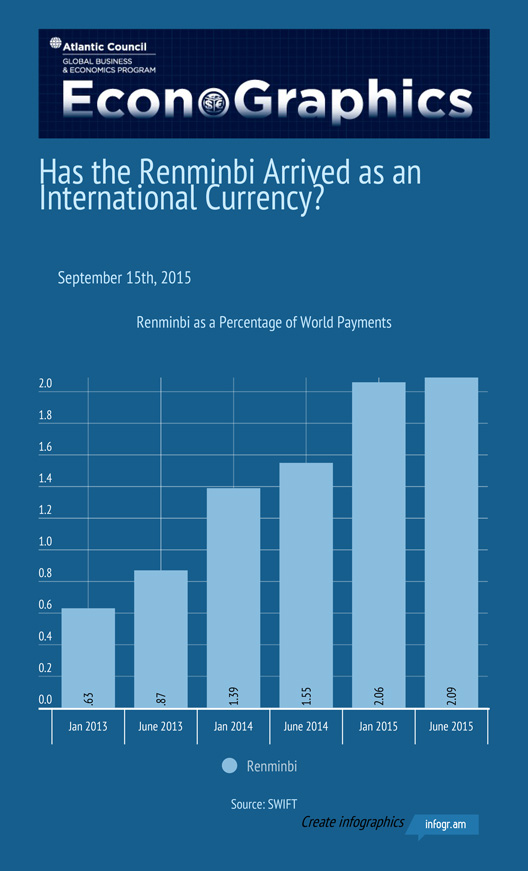As China slowly transitions from an investment and export based economy to a consumer based economy, the Chinese must also liberalize both their monetary affairs and the management of their currency. By increasing the wealth of Chinese consumers via their currency’s value, domestic demand will supplant the role of exports. For this process to be completed, the Chinese currency, the Renminbi, must assume its place in the package of globally dominant currencies.

The People’s Bank of China is managing this process with two fronts, more aggressively via trade, and more tentatively with capital. For capital it has created an offshore market, targeted investment schemes within China, two way investment channels, and mutual recognition stock programs. These policies give foreign investors more ways to access the Chinese market and in turn boost the cross border flow of the Renminbi.
This graph gives an imperfect indication of how the Renminbi is being internationalized, by illustrating how it is increasingly utilized in the international market. While most currencies’ percentage of world shares have remained relatively stable over the past three years, the Renminbi has soared in usage. According to data acquired by SWIFT, a co-operative financial organization, the Renminbi has gone from the thirteenth most used currency in world payments to fifth in just the past three years. The Renminbi most recently overtook the Japanese Yen. Despite this rise, the US Dollar holds the largest market share, with over 43.57% of world payments made in American dollars.
For more information about the internationalization of the Renminbi please consult Renminbi Ascending: How China’s Currency Impacts Global Markets, Foreign Policy, and Transatlantic Financial Regulation. by the Atlantic Council’s Chris Brummer.